(Attention)
This is a guide to the permanent exhibition room of the archives, which was set up in the former Hokkaido Government Office Building (Red Brick Office Building) until the end of September 2019.
Documents tell the history of Hokkaido (2)
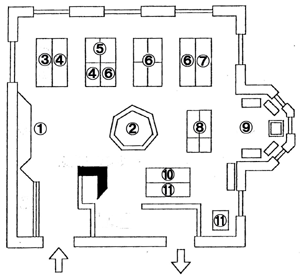
06. Life of the people

The population of Hokkaido was about 100,000 when the Colonization Commission was put into place. Following the progress of the colonization, the population showed a dramatic increase. Ten years later, in 1879, it reached 200,000. During this time, the fishery industry was developed, and newly colonized areas were built along the coast and around Sapporo and urbanization of the cities developed, and a new wave of culture began to sprout.
Colonized areas
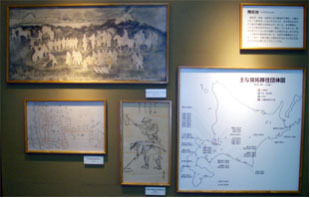
Pioneers’role of the development and colonization of Hokkaido were descendants of the samurai class who sought a new life after the Meiji Restoration. Still, many of the developing areas were limited to the coast and around Sapporo.
The city

In Sapporo and the coastal cities such as Hakodate, which was developed as a trade route from ancient times, there were some influences by civilization and enlightenment in civil life. These documents show what kind of occupations the people who lived in each city had.
The Ainu
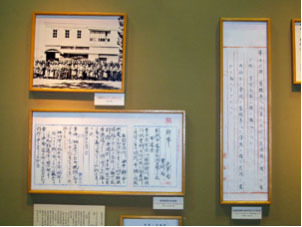
With the progress of agricultural colonization, the native people called Ainu started losing their land. Unfortunately, their hunting and fishing was also limited, which caused the Ainu people to suffer. Moreover, after exchanging Sakhalin for the Kuril Islands with Russia in 1875, the Ainu, who originally inhabited Sakhalin, were forced to move to the suburbs of Sapporo. This brought the Ainu a great hardship.
Education
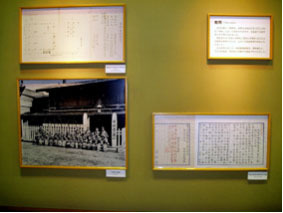
The Meiji government provided a new educational system across the country. However, its implementation in Hokkaido was delayed several years because it was a newly developed area. In addition, areas under colonization outside of urban areas used a simplified curriculum which had a shorter length of study than the usual curriculum. This anomalous education system became a distinctive feature of Hokkaido education for many years.
07. Transportation and Communication

The increase of steamships, the regular service on the coast sailing routes, and the establishment of transportation companies became the symbols of the modernization of marine transportation during the Colonization Commission period. Furthermore, the first road for horses and vehicles was completed between Hakodate and Sapporo in 1873 with the full use of advanced techniques. The speedy extension of telegraph cables and the establishment of the postal network also helped to accelerate the communication network in Hokkaido.
The opening of the railroad

The railroad, which had been considered early on as a means of transporting coal produced in the inland areas, was opened between Temiya (Otaru) and Sapporo in 1880. This was the third railroad line built in Japan after Tokyo and Oosaka.
08. The development period

In 1882, near the end of the Colonization Commission's 10-year plan, the Commission was abolished and the colonization project was suspended.
After the Hokkaido Government was put into place in 1886, the whole colonization project was reconsidered, and the time of“colonization”changed to the time of “settlement and development”with the emphasis on an increase in immigration.
Settlement area map
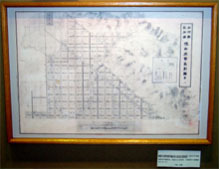
The Hokkaido Government surveyed and divided the main uncultivated lands of Hokkaido and enthusiastically invited immigrants. These area maps are often used as the basis for land grant applications and for village formation.
Immigrants to inland areas
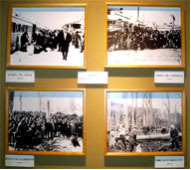
When the government began large-scale disposal of undeveloped regions, thousands of immigrants swarmed to Hokkaido from farming villages throughout Japan every year. Settlement progressed rapidly in the northern and eastern parts of Hokkaido, and reached a peak at the time of World War I.
09. [small display area] The history of Akarenga (Red Brick), the former Hokkaido government office building

This area is for displaying materials related to the Red Brick.
It was built at great cost in 1888 as the office building of the Hokkaido government, which had just started at that time. It is a two-story American neo-baroque style building with a basement. The nickname Akarenga (Red Brick) is widely familiar to Hokkaido citizens.
The establishment of the Red Brick

The architectural engineers, represented by Seijiro Hirai, the manager of the civil department of the government, designed the building. However, the octagonal dome, which was the main feature of the building, was so precarious structurally that it was removed a few years after the completion of the building. In 1968, the dome was rebuilt as it was when the building was first erected.
The Red Brick fire
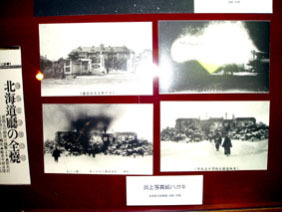
These are the pictures taken when the office caught on fire on January 11th, 1909. Most of the outer bricken walls remained intact, but the fire destroyed the inside and the roof. Repair work started from the following year and was completed in June, 1912.
The renovated Red Brick
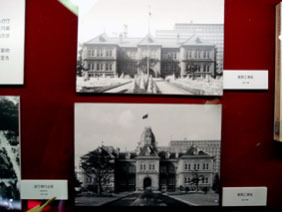
In 1968, in commemoration of the 100 year anniversary of the founding of Hokkaido, the building was renovated as it was originally erected. As Western-style buildings of the Meiji era are rare, this building was designated as an important cultural property of Japan in the following year.
Wooden brick pavement

The road extending from the main gate to the east was the first paved road in Sapporo in 1924. The road was paved with bricks made from elm treated with chemicals.
10. [small display area] Hakodate Magistrate¢s Office and documents

This area is for the display of documents of the Hakodate Magistrate’s Office, which was designated as an important cultural property in 2004. In conjunction with the opening of Hakodate port, the Edo Shogunate established the magistrate¢s office in 1854. The only duty in the beginning was the diplomatic management at the port. However, shortly afterwards the magistrate¢s office duties expanded to include the jurisdiction over all Ezo and various other important duties, such as encouragement to cultivate the land, carry out the Ainu policy and insure the security of the northern areas.
The drawing for Kachel
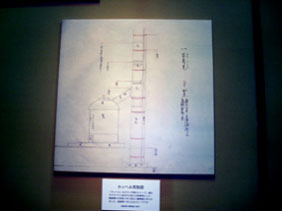
Kachel is the word for stove in the Dutch languague. The Hakodate magistrate requested a cast maker to make 24 kachels for officials who were to leave for northern parts of Hokkaido and Sakhalin. This is the drawing of the first domestic stove.
Hakodate and Ezo in the last days of the Tokugawa Shogunate as written in the documents

These documents showed the office activities were highly international, with negotiations with the great Western powers in Hakodate, the policy toward the Ainu by the Shogunate, and trade with other tribes. In the documents, for instance, through the use of an interpreter, the magistrate strongly requested the consuls of the U.K. and the U.S. not to fire guns in the city.
Trade with Sangtans (the northern natives)

The Sangtans are an ethnic group with a good flair for business living in the lower Amur region (Russian territory). They came over to Sakhalin to trade with the Ainu and the Shogunate officers. They brought valuable goods they got through trade with Shin Dynasty of China to Japan, such as brocades, jaspers and eagle tails, and they got ironware and furs from Japan in exchange.
11. Records of historical material
The work of the Archives

To know past events precisely, you need documents as evidence. It is the responsibility for the archives not only to carefully preserve old recorded materials such as the colonization commission documents, but also to choose new documents of historical value to show the present period to future generations.
Now we are striving to collect and preserve documents, especially official documents of Hokkaido, in order that citizens now and in the future can learn about the history of Hokkaido and also study about its administration.

